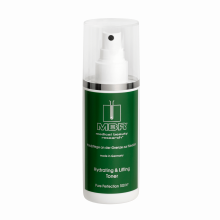Cleansing and Toning
Cleansing
Regular cleansing is important, and when done properly, it removes dirt and grime, eliminates excess oil on the surface and skin pores, and aids the cell renewal process. It's usually advisable to use water-soluble creams or gels with tepid water or wipe-off lotions. For oily skin, use soap-free bars that are pH-balanced. When washing/cleansing the face, there are some key steps to follow:
- Spread the cleanser gently over your face with your fingertips
- Splash warm water in your face several times to rinse the cleanser thoroughly off- make sure there is no more residue on your skin.
- With a clean towel, gently pat your face- don't over-dry - try to keep your face a little moist.
- Onto your clean, moist skin, apply a moisturizer or an active skincare product of your choice. Massage the product into your face by gently tapping (not pulling or tugging) with your fingers until it is absorbed.
As was previously mentioned, it's generally a good idea to cleanse your face twice a day, usually in the morning and before going to bed at night. Again, it is best to use lukewarm water and a mild cleanser free of harsh detergents, soaps, alcohol, or other irritants.
Cleasers (editor's choice)
Toning
There is ongoing debate as to whether or not toning is beneficial and whether or not it should even be considered part of the skincare routine. However, many experts believe that facial toners improve the skin's texture after cleansing when applied to the skin. In addition, they claim that they help close the pores and tighten cell gaps to prevent impurities from entering the skin.
There are a couple of problems with that argument. First, if you close your pores before applying a moisturizer, it can defeat the purpose as moisturizers are meant to be absorbed. Secondly, most toners contain alcohol or witch hazel (or both!), which dry the skin and can lead to irritation.
If you feel that you must use a toner, look for alcohol-free brands with ingredients such as chamomile, rosemary, or rose water.





